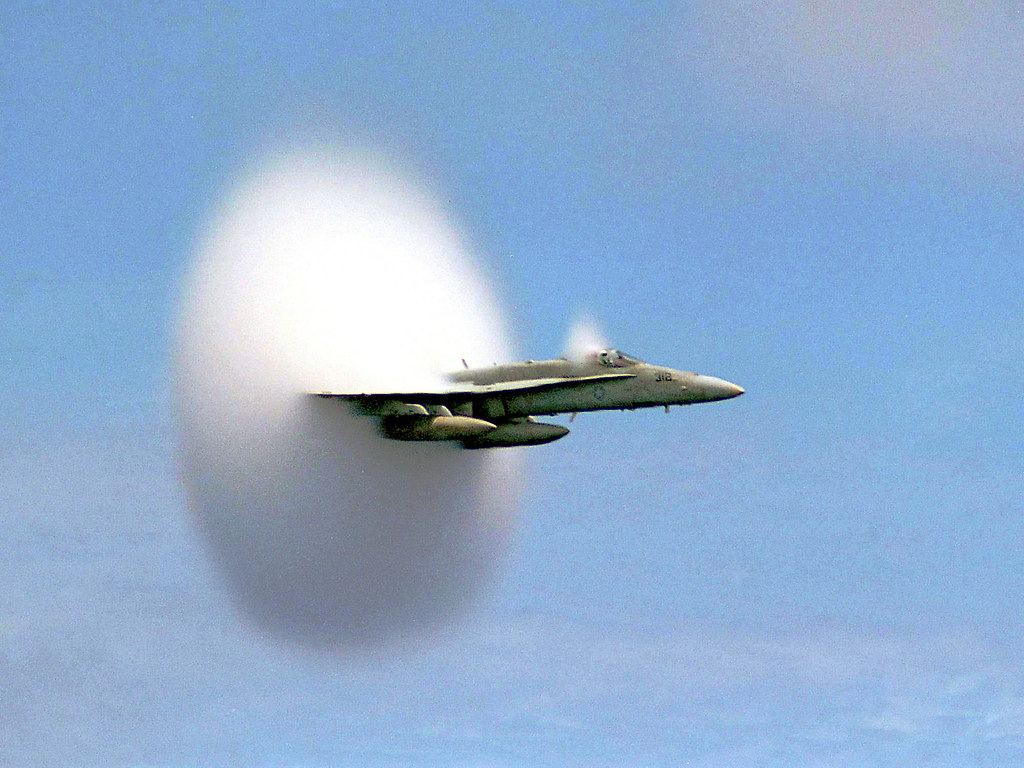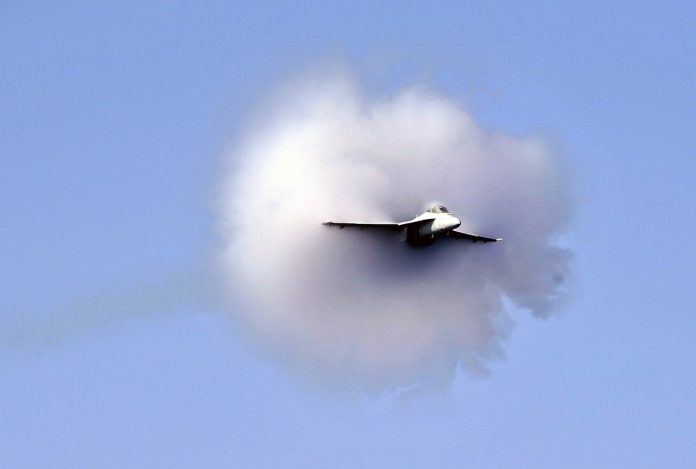Why is there a big shock wave in the air?
A supersonic (or over-sounding) airplane is flying at 1100 km / h at a low altitude, 60 m above the ground. As it flew near a tall building, suddenly the building collapsed, like something was struck by something. This happened in the 50s of the twentieth century when supersonic airplanes were born not long ago. When investigating the cause of this incident, it was discovered that the culprit is a type of airborne wave.
When a ship runs on water, it will cause waves. When the plane flies in the air, it will cause the air to tremble and travel in all directions. We call it airwaves. The higher the aircraft speed, the more intense the airwave generated. Especially when the aircraft’s speed is faster than the speed of sound transmission, the air in front of the aircraft, in a very short period, is suddenly compressed by airwaves, causing the air pressure in. This area becomes particularly high, and the density and temperature are also exceptionally high. The air’s vibrational state in this area carries enormous energy and rapidly spreads from four directions from near to far, forming particularly intense airwaves. Accompanied by loud bangs, the airwaves raged like a heavy bomb from the air near the ground, crushing and crushing obstacles. This type of violent airwave is called a shockwave.

In addition to supersonic aircraft, other objects move at high speed in the air. Such as the whip of teaching animals when they strike hard, rifle bullets and cannons have just come out of the barrel, and even meteorites are falling in the sky can generate shock waves, only the magnitude of the shock wave energy is very different. For example, the Wincaba crater in Quebec, Canada, was caused by an asteroid weighing 100 thousand tons, dropping at high speed, its shockwave when it landed on the exploded ground. The hole was as deep as 435 m deep and 3.5 km wide in diameter. The power of the shockwave exceeded the explosion of the atomic bomb. And the shockwave caused by the whip and bullets only emitted a crispy “bang” or a creak.




